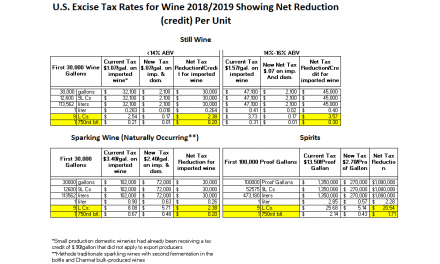I’m just back from Australia where I spoke at the inaugural Australia Trade Tasting. It was held in Melbourne and Sydney and put on by our friends at Beverage Trade Network.
The event consisted of a walk around tasting in Melbourne followed by individual days dedicated to the Australian market, followed by a full day U.S. market focus and a final day for the tasting in Sydney.
We sponsored the event along with Wine Australia, MHW, the Melbourne International Wine Comp.,
and trade organizations representing Castilla-LaMancha, Alsace, BusinessFrance, and media partner “The Shout” which is the major industry trade pub Down Under.
Several things jumped out at me at the conference, and a few have emerged as I’ve had the chance to reflect on the people I met, things I heard and wines I tasted.
- The Australian wine business is healthy and poised for growth in the U.S. and around the world. They’re making great strides in the UK and Germany, but the U.S. has been a tougher nut to crack. If you dig down into the stats we see significant growth in the $12-$20 “fine wine” price category for Australian wines here in the states. That’s a new story that needs to be told. And hey folks, let’s stop talking about Yellow Tail, it’s not relevant to today’s new generation of wine drinkers.
- Collaboration is key to success for Australia in the U.S. The country has a “no problems, mate” attitude and that’s reflected in the collaboration and camaraderie of the suppliers I talked to. They recognize that Wine Australia’s efforts are making an impact, but that they have to work together to make the story a reality. At the end of the day, they recognize even the smaller players are a significant piece of the puzzle to reinforce the quality story. And keep your eyes peeled for new U.S. market entries from the bigger players. With the AUD/USD ratio now favorable for exporters I expect we’ll see some major entries and re-entries.
- Australia is making great wines that fit the “new palate” and are delivering great QPR. Finesse, sense of place, freshness and balance are words that describe the country’s portfolio that I had a chance to taste on the opening day of the event. Contrast that with the words commonly used just a few years ago, i.e. big, jammy and high alcohol Shiraz.
- Barossa is the lead horse. There’s incredible diversity in terms of varieties and growing areas in a country that’s roughly the same size as the U.S. No surprise there, but Barossa has taken on a mantle akin to Napa’s in the U.S. It’s a world-class region for Cabernet Sauvignon production. The winemakers have embraced the unique assets of the region and are delivering wines with typicity, structure, balance and strength.
- Tasmania is coming of age. While I didn’t get a chance to go there, I did have the chance to taste some of the cool climate wines they’re producing. These varieties have found a home And while I think the wine quality is more impacted by the soil, exposures and local weather, it can’t hurt that Tasmania boasts the cleanest air in the world. Check out a globe looking at the bottom…it’s the first land in the Southern Ocean’s Roaring Forties that the wind hits after Capes Horn and Good Hope. And not for nothing, we heard from a couple of producers who are making world-class whiskeys that are competing head to head with Scotland’s finest: Sullivan’s Cove, Lark Distillery.
- Kudos to Cooper’s Brewery. In a world which looks destined to have one massive global beer company dominating everything, it was great to hear Glenn Cooper’s rousing story about how they fought off acquisition efforts. It’s the last remaining Australia-owned beer company, and based on what Glenn told us, will forever be so. For those of you interested in the Aussie beer biz, check out Keith Deutsher’s “The Breweries of Australia. A History” which moderator David Lipman gave me a copy of.
Bottom line: if you think you know Australian wines, it’s time for a fresh look at what’s in the barrels and bottles now. It will blow your mind. If you’re interested in making connections with the top producers I tasted there, let me know. Hungerford Hill’s Pinot Gris was just one example of a wine that ought to be available in the U.S.










